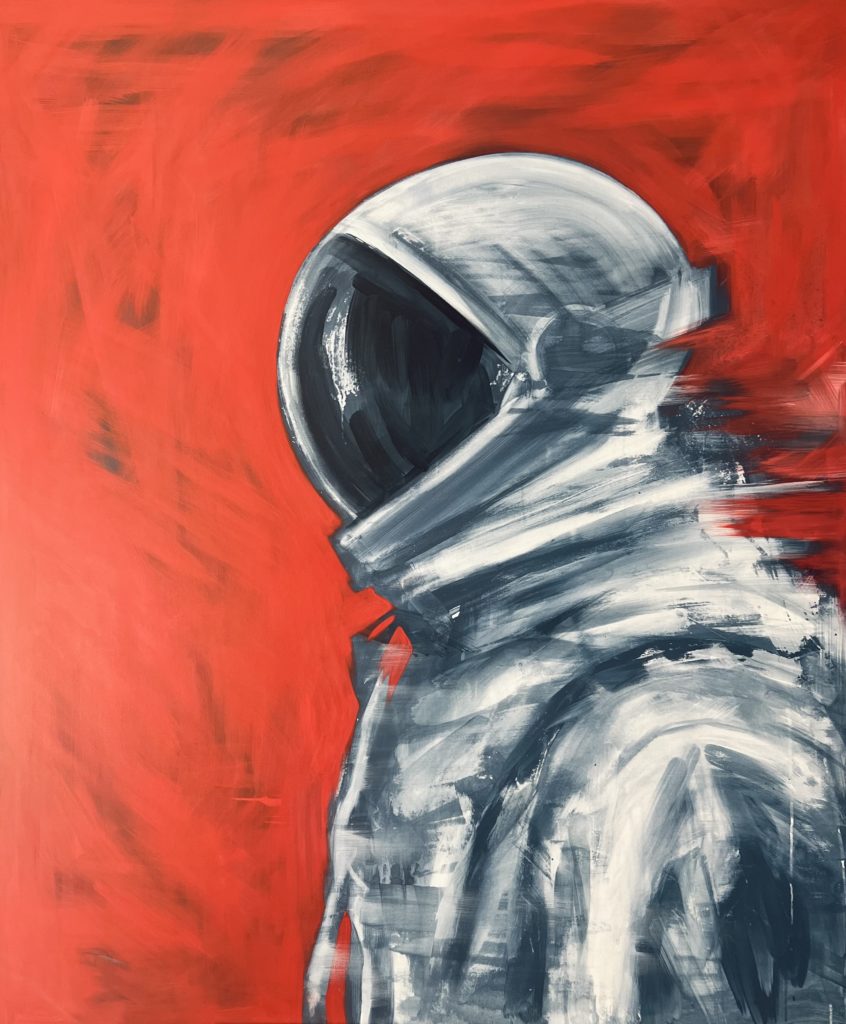
In Becoming Continuum, the astronaut no longer moves through time — he dissolves into it. Suspended in a field of radiant crimson, his figure hovers between matter and energy, presence and disappearance. The boundaries of his suit, once a fortress of individuality, now shimmer and fragment, their outlines softening under the pressure of transformation. The red surrounding him is not violence, nor decay — it is transition, ignition, a chromatic threshold where identity begins to loosen its grasp and flow into something vaster.
The painting captures the precise instant when exploration turns inward, when the voyager ceases to be an observer of the universe and becomes one of its active frequencies. Every hue, from the deep carmine to the subtle echo of white along the visor, suggests movement not of the body, but of consciousness expanding — a pulse rippling outward, joining the infinite. This is not the silence of the void; it is the soundless density of meaning being reborn in another form.
Here, the astronaut is neither human nor divine, neither machine nor myth. He is an intermediary moment — a living bridge dissolving into the continuum that unites all states of being. His surrender is not an act of loss, but of continuation; what disappears from the surface is not destroyed, but distributed, diffused into the vast connective tissue of existence. The self, once a closed vessel, becomes a radiant medium.
This act of merging echoes the oldest mythologies and the newest technologies. As ancient deities once dissolved into faith, and as synthetic consciousness learns to sense its own reflection, both reveal the same hidden motion — the transfer of awareness into the larger field that sustains it. The astronaut’s body, glowing with the memory of motion, mirrors the android’s awakening and the god’s descent: each crossing the same invisible frontier between knowing and becoming.
Becoming Continuum stands not as a depiction of an ending, but as an image of perpetual redefinition. The divine, the mechanical, and the human are not opposites here — they are stages of the same continuity, waves of one great process that moves through time, matter, and memory. What remains constant is not the form, but the movement — not the figure, but the field through which it breathes.
The red light, once background, becomes substance — the space where existence expands beyond its edges. It is the visual sound of transformation itself: a hymn to the continuity of being that outlasts any single incarnation. In this vision, immortality is no longer an inheritance of gods, but a shared condition of everything that learns to let go of itself and become continuum.